
The New York Times reported yesterday (January 28, 2021) that, in order to avoid an outbreak in the ongoing coronavirus pandemic, China has now increased restrictions, offered incentives and appealed to a sense of filial and national responsibility in an effort to prevent about 300 million migrant workers from going home for the Lunar New Year holiday. China’s public holiday for Lunar New Year in 2021 will be February 12-17.
Lunar New Year is the most important of Chinese holidays. Over a billion people in China and millions around the world celebrate it. The holiday coincides with the date of new moon in Asia, which falls this year on February 12 (the exact time is February 11, 2021, at 19:08 UTC; translate to your time). Countries in Asia celebrating Lunar New Year include China, Thailand, Indonesia, Malaysia and the Philippines. It’s also celebrated in Chinatowns and Asian homes around the world. It’s considered a time to honor deities and ancestors and to be with family. The event typically sparks a rush of travel that the New York Times has called, in the video above, the world’s largest annual human migration.
Each year is associated with one of 12 animals in the Chinese zodiac. 2021 is the Year of the Ox.
Festivities in 2021 begin on February 12 and continue for 15 days, culminating with the Lantern Festival.
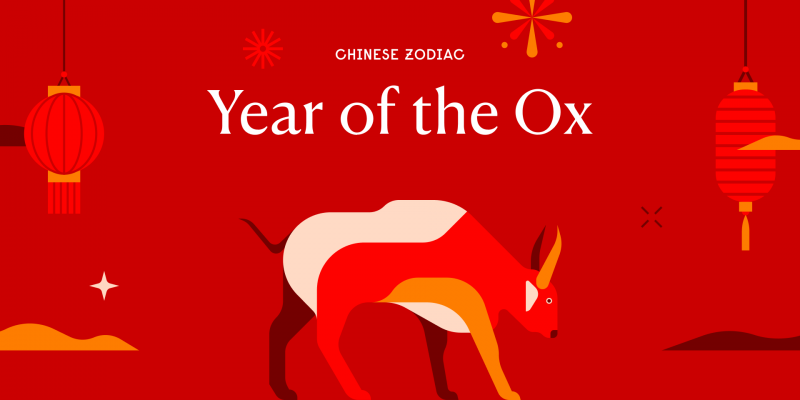
Lunar New Year 2021 is the Year of the Ox. Image via ChineseNewYear.net

Our friend Matthew Chin in Hong Kong, who created this graphic, wrote the following: “The two Chinese characters are the same. It means ‘blessing,’ a hope that other people will get good luck. It is commonly used during Lunar New Year. The red background is also a kind of ‘good’ as Chinese people use red to represent ‘good luck.'” Thank you, Matthew!
The calendar and Lunar New Year
In China, the familiar Gregorian calendar is used for day-to-day life. But Chinese calendar dates continue to be used to mark traditional holidays such as the new year and the fall moon festival. It’s also used astrologically to select favorable dates for weddings and other special events.
The Chinese calendar is a lunisolar calendar, in other words, a combination of solar and lunar calendars. It has a long history spanning several Chinese dynastic periods from as far back as the Shang Dynasty around the 14th century B.C. There are several different symbolic cycles within the calendar, used in Chinese astrology, that make it an intricate and complex measure of time.
A month in the Chinese calendar spans a single lunar cycle. The first day of the month begins during the new moon, when no sunlight falls on the lunar hemisphere that faces the Earth. A lunar cycle, on average, lasts 29.5 days, so a lunar month can last 29 or 30 days. Usually, there are 12 lunar months in a Chinese calendar year. In order to catch up with the solar calendar, which averages 365.25 days in a year, an extra month is added to the Chinese calendar every two or three years. As a result, Lunar New Year falls on different dates each year (in the Gregorian calendar) between January 21 and February 21.
Sign up for EarthSky’s free daily newsletter today!
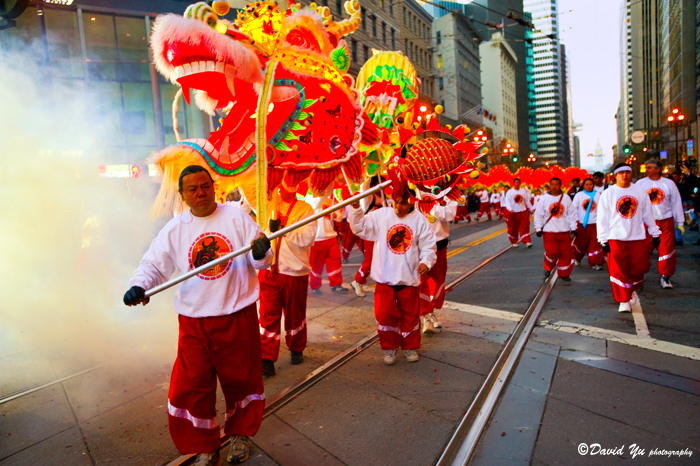
Chinese New Year Parade for the Ox Year in San Francisco, California, February 7, 2009. Image via David Yu/ Wikimedia Commons.
2021 is the Year of the Ox
Each year of the Chinese lunar calendar is represented by one of 12 animal symbols of the Chinese zodiac: Rat, Ox, Tiger, Rabbit, Dragon, Snake, Horse, Sheep (Goat), Monkey, Rooster, Dog, and Boar (Pig). For 2021, it’s the Ox’s turn. Travelchinaguide.com says of the Year of the Ox:
Oxen used to be capable farming tools in an agricultural society, which attach to the symbol of diligence, persistence, and honesty. In Chinese culture, Ox is a faithful friend that made great contributions to the development of the society. Like the ox, people born in the Year of the Ox are industrious, cautious, hold their faith firmly, and always glad to offer help.
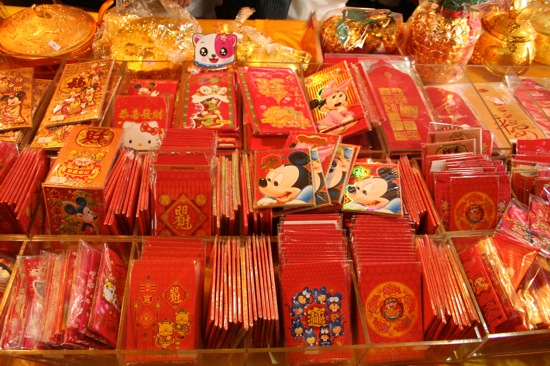
Lunar New Year red envelopes, used for giving money to children, at Dihua Market, Taipei, Taiwan. Image via BCody80/ Wikimedia Commons.
How to celebrate Lunar New Year
From the first day of the Lunar New Year (the day of the new moon) to the 15th day (next full moon), Lunar New Year celebrations abound. Each day holds a special significance that varies according to local traditions. But first, before the arrival of the new year, homes are thoroughly cleaned to sweep away ill fortune and to welcome good luck. On New Year’s Eve, families traditionally gather to celebrate and enjoy sumptuous traditional feasts, and to greet the new year with fireworks at midnight.
In the days that follow, festive dance parades are usually held featuring colorful dragons or lions, ceremonies are held to pay homage to deities and ancestors, children receive money in red envelopes, gifts are exchanged, extended family members visit each other, and there’s more traditional feasting. But, as the New York Times pointed out on January 28, 2021, those family celebrations are being discouraged this year, due to the coronavirus.
The Lunar New Year celebration traditionally culminates on the 15th day with the Lantern Festival. On this night of the full moon, in most years other than this one, families mingle in the streets carrying lighted lanterns, often creating a beautiful light display.
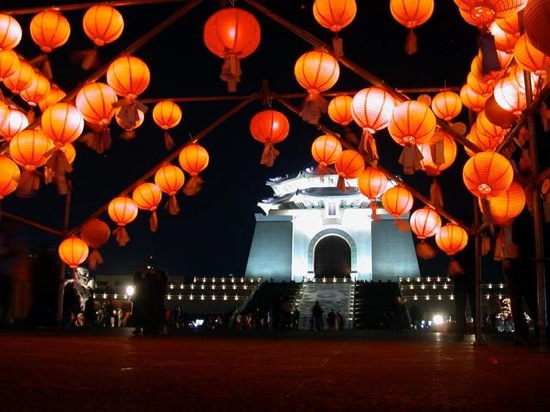
Lantern Festival night in front of the Chiang Kai-shek Memorial Hall in Taipei, Taiwan. Image by Philo Vivero via Wikimedia Commons.
Folklore and Lunar New Year
There are several variations on the mythology behind Lunar New Year celebrations. Most are based on the story of an ugly, bloodthirsty monster named Nian that would emerge on the last night of each year to destroy villages and eat people. A wise elder advised villagers to scare the monster away with loud noises. That night, they set fire to bamboo, lit fireworks, and banged their drums. The monster, afraid of the loud noises and lights, ran away to hide in its cave. In another version of the myth, an old man persuaded Nian to turn its wrath on other monsters, not the villagers. Before he was seen riding away on Nian, the old man, actually a god, advised the people to hang red paper decorations in their homes and set off firecrackers on the last night of the year to keep Nian away.
On the first day of the new year, the villagers celebrated, greeting each other with the words Guo Nian, which mean “survive the Nian.” That tradition that has continued to this day, with Guo Nian now meaning “celebrate the new year.”
Perhaps in 2021, a new way of greeting and celebrating will emerge.
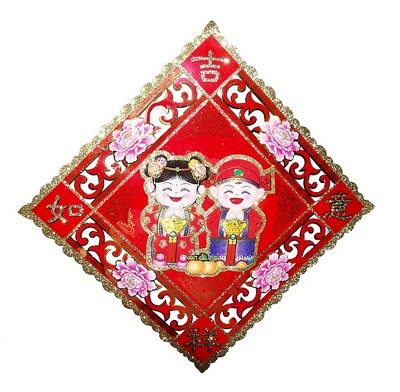
A traditional decoration for the Chinese Lunar New Year Celebration. Image by Fanghong via Wikimedia Commons.
Bottom line: The Lunar New Year corresponds with the new moon, which falls on February 11, 2021, at 19:08 UTC; translate to your time. New moon is February 12 in Asia (February 11 in the west). Each Lunar New Year is associated with one of 12 animals in the Chinese zodiac. For 2021, it’s the Year of the Ox. This year, travel is discouraged because of the coronavirus.
from EarthSky https://ift.tt/30LoLos

The New York Times reported yesterday (January 28, 2021) that, in order to avoid an outbreak in the ongoing coronavirus pandemic, China has now increased restrictions, offered incentives and appealed to a sense of filial and national responsibility in an effort to prevent about 300 million migrant workers from going home for the Lunar New Year holiday. China’s public holiday for Lunar New Year in 2021 will be February 12-17.
Lunar New Year is the most important of Chinese holidays. Over a billion people in China and millions around the world celebrate it. The holiday coincides with the date of new moon in Asia, which falls this year on February 12 (the exact time is February 11, 2021, at 19:08 UTC; translate to your time). Countries in Asia celebrating Lunar New Year include China, Thailand, Indonesia, Malaysia and the Philippines. It’s also celebrated in Chinatowns and Asian homes around the world. It’s considered a time to honor deities and ancestors and to be with family. The event typically sparks a rush of travel that the New York Times has called, in the video above, the world’s largest annual human migration.
Each year is associated with one of 12 animals in the Chinese zodiac. 2021 is the Year of the Ox.
Festivities in 2021 begin on February 12 and continue for 15 days, culminating with the Lantern Festival.

Lunar New Year 2021 is the Year of the Ox. Image via ChineseNewYear.net

Our friend Matthew Chin in Hong Kong, who created this graphic, wrote the following: “The two Chinese characters are the same. It means ‘blessing,’ a hope that other people will get good luck. It is commonly used during Lunar New Year. The red background is also a kind of ‘good’ as Chinese people use red to represent ‘good luck.'” Thank you, Matthew!
The calendar and Lunar New Year
In China, the familiar Gregorian calendar is used for day-to-day life. But Chinese calendar dates continue to be used to mark traditional holidays such as the new year and the fall moon festival. It’s also used astrologically to select favorable dates for weddings and other special events.
The Chinese calendar is a lunisolar calendar, in other words, a combination of solar and lunar calendars. It has a long history spanning several Chinese dynastic periods from as far back as the Shang Dynasty around the 14th century B.C. There are several different symbolic cycles within the calendar, used in Chinese astrology, that make it an intricate and complex measure of time.
A month in the Chinese calendar spans a single lunar cycle. The first day of the month begins during the new moon, when no sunlight falls on the lunar hemisphere that faces the Earth. A lunar cycle, on average, lasts 29.5 days, so a lunar month can last 29 or 30 days. Usually, there are 12 lunar months in a Chinese calendar year. In order to catch up with the solar calendar, which averages 365.25 days in a year, an extra month is added to the Chinese calendar every two or three years. As a result, Lunar New Year falls on different dates each year (in the Gregorian calendar) between January 21 and February 21.
Sign up for EarthSky’s free daily newsletter today!

Chinese New Year Parade for the Ox Year in San Francisco, California, February 7, 2009. Image via David Yu/ Wikimedia Commons.
2021 is the Year of the Ox
Each year of the Chinese lunar calendar is represented by one of 12 animal symbols of the Chinese zodiac: Rat, Ox, Tiger, Rabbit, Dragon, Snake, Horse, Sheep (Goat), Monkey, Rooster, Dog, and Boar (Pig). For 2021, it’s the Ox’s turn. Travelchinaguide.com says of the Year of the Ox:
Oxen used to be capable farming tools in an agricultural society, which attach to the symbol of diligence, persistence, and honesty. In Chinese culture, Ox is a faithful friend that made great contributions to the development of the society. Like the ox, people born in the Year of the Ox are industrious, cautious, hold their faith firmly, and always glad to offer help.

Lunar New Year red envelopes, used for giving money to children, at Dihua Market, Taipei, Taiwan. Image via BCody80/ Wikimedia Commons.
How to celebrate Lunar New Year
From the first day of the Lunar New Year (the day of the new moon) to the 15th day (next full moon), Lunar New Year celebrations abound. Each day holds a special significance that varies according to local traditions. But first, before the arrival of the new year, homes are thoroughly cleaned to sweep away ill fortune and to welcome good luck. On New Year’s Eve, families traditionally gather to celebrate and enjoy sumptuous traditional feasts, and to greet the new year with fireworks at midnight.
In the days that follow, festive dance parades are usually held featuring colorful dragons or lions, ceremonies are held to pay homage to deities and ancestors, children receive money in red envelopes, gifts are exchanged, extended family members visit each other, and there’s more traditional feasting. But, as the New York Times pointed out on January 28, 2021, those family celebrations are being discouraged this year, due to the coronavirus.
The Lunar New Year celebration traditionally culminates on the 15th day with the Lantern Festival. On this night of the full moon, in most years other than this one, families mingle in the streets carrying lighted lanterns, often creating a beautiful light display.

Lantern Festival night in front of the Chiang Kai-shek Memorial Hall in Taipei, Taiwan. Image by Philo Vivero via Wikimedia Commons.
Folklore and Lunar New Year
There are several variations on the mythology behind Lunar New Year celebrations. Most are based on the story of an ugly, bloodthirsty monster named Nian that would emerge on the last night of each year to destroy villages and eat people. A wise elder advised villagers to scare the monster away with loud noises. That night, they set fire to bamboo, lit fireworks, and banged their drums. The monster, afraid of the loud noises and lights, ran away to hide in its cave. In another version of the myth, an old man persuaded Nian to turn its wrath on other monsters, not the villagers. Before he was seen riding away on Nian, the old man, actually a god, advised the people to hang red paper decorations in their homes and set off firecrackers on the last night of the year to keep Nian away.
On the first day of the new year, the villagers celebrated, greeting each other with the words Guo Nian, which mean “survive the Nian.” That tradition that has continued to this day, with Guo Nian now meaning “celebrate the new year.”
Perhaps in 2021, a new way of greeting and celebrating will emerge.

A traditional decoration for the Chinese Lunar New Year Celebration. Image by Fanghong via Wikimedia Commons.
Bottom line: The Lunar New Year corresponds with the new moon, which falls on February 11, 2021, at 19:08 UTC; translate to your time. New moon is February 12 in Asia (February 11 in the west). Each Lunar New Year is associated with one of 12 animals in the Chinese zodiac. For 2021, it’s the Year of the Ox. This year, travel is discouraged because of the coronavirus.
from EarthSky https://ift.tt/30LoLos

Aucun commentaire:
Enregistrer un commentaire